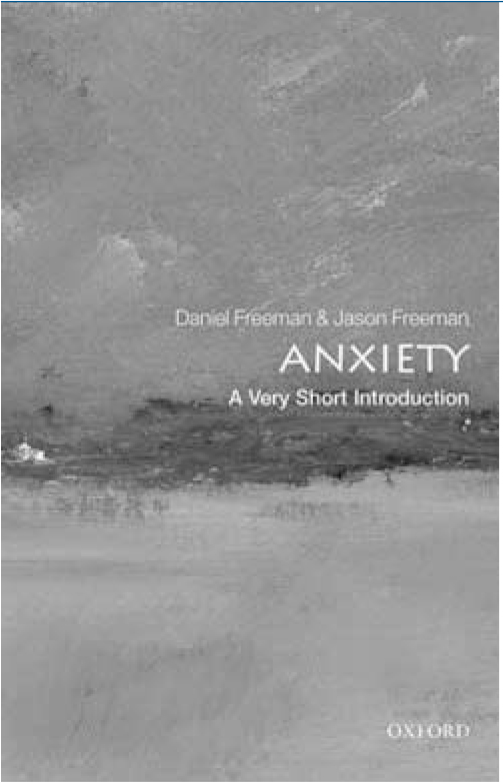
This book is the latest volume of the series ‘Very Short Introductions’, which covers a diverse range of topics from biblical archaeology to witchcraft. It is written by two brothers, Daniel and Jason Freeman, the former a consultant clinical psychologist and the latter an editor and author specialising in popular psychology and self-help.
Over the course of 11 chapters, the Freeman brothers cover the psychoanalytic, behavioural, cognitive and neurobiological theories of anxiety, before dedicating a further chapter to each of the major anxiety disorders, such as generalised anxiety disorder, panic disorder and obsessive–compulsive disorder. The final chapter describes the treatment options available, before presenting the reader with a number of self-assessment questionnaires, references and suggestions for further reading.
One of the appealing features of this book is the way in which it colours hard fact and theory with interesting historical asides, while peppering references to anxiety in literature, television and film alongside references to anxiety disorders in peer-reviewed journals.
The inclusion of case studies, as well as first-person narratives from household names such as Michael Palin, compliments some of the more heavy concepts and facts presented and helps put them into context. It also provides the reader with an identifiable figure with whom to relate and empathise with.
As a core trainee between part I and part II of the MRCPsych examinations, I found this book a refreshing read, putting into perspective information I had read from other sources with a more solid but dry academic grounding. My only criticism is that I am unsure of who the ideal reader for this book would be. In a sense the book suffers from a Goldilocks-type dilemma. It is not rigorous or comprehensive enough for medical students or trainees working towards their MRCPsych, yet I wonder whether it would be a little too academic for the average member of the public.
However, it was an enjoyable read as an adjunct to core texts. I would also recommend this book to patients with a relatively high level of education and an interest in learning more about anxiety.



eLetters
No eLetters have been published for this article.